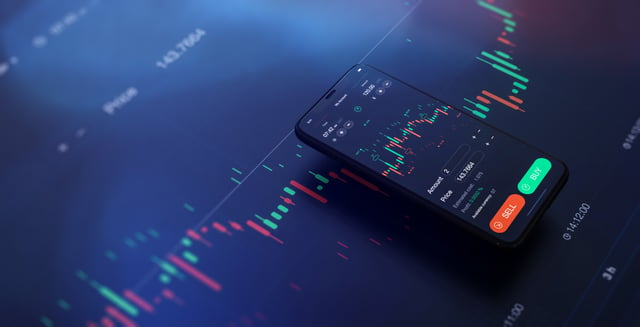Welcome to the vibrant realm of forex trading, where currencies dance to the rhythm of global economies.
What is Forex trading? Join us on this journey as we unravel the intricacies of this dynamic market, from its fundamental concepts to the practical strategies that shape its landscape.
From currency pairs to pips, let's unravel the mysteries and demystify the workings of this dynamic market.
What is Forex Trading?

Forex, short for foreign exchange, is the decentralized global marketplace where currencies are bought and sold.
At its core, forex trading, or foreign exchange trading, is the art and science of buying and selling currencies on the foreign exchange market. It's like stepping into a bustling marketplace where currencies are the goods being traded.
In simpler terms, forex trading involves exchanging one currency for another with the aim of making a profit from fluctuations in their exchange rates. These fluctuations are influenced by a myriad of factors, including economic indicators, geopolitical events, central bank policies, and market sentiment.
Forex is the largest and most liquid financial market in the world, with an average daily trading volume exceeding $7.5 trillion. Unlike stock markets that operate within specific trading hours, forex trading is open 24 hours a day, five days a week, allowing traders from around the globe to participate at any time.
How Does Forex Trading Work?
At its core, forex trading involves speculating on the price movements of currency pairs. Each currency pair consists of two currencies, with one currency being bought and the other being sold. For example, in the EUR/USD currency pair, the euro (EUR) is the base currency, and the US dollar (USD) is the quote currency.
When you trade forex, you're essentially betting on whether the value of one currency will rise or fall relative to the other. If you believe the base currency will strengthen against the quote currency, you buy the currency pair (known as going long). Conversely, if you expect the base currency to weaken, you sell the currency pair (known as going short).
Key Players in the Forex Market
Several participants drive the forex market's liquidity and volatility:
Central Banks
Central banks play a pivotal role in shaping currency values through monetary policy decisions, interest rate adjustments, and interventions in the foreign exchange market.
Commercial Banks
Commercial banks facilitate forex transactions for clients, including corporations, institutional investors, and retail traders. They also engage in speculative trading to profit from currency fluctuations.
Institutional Investors
Hedge funds, asset managers, and other institutional investors trade forex to diversify portfolios, hedge against currency risk, and capitalize on macroeconomic trends.
Multinational Corporations
Multinational corporations (MNCs) engage in Forex transactions to manage currency risks associated with their international operations. For example, a US-based company with subsidiaries in Europe may engage in currency hedging to protect against adverse exchange rate movements.
Retail Traders
With the advent of online trading platforms and brokerage services, retail traders like us can access the Forex market and trade currencies from anywhere in the world.
As retail traders, we may not have the same financial resources as institutional players, but we contribute to market liquidity and participate in price discovery.
All the key players, along with various other participants such as governments, institutional investors, and algorithmic traders, collectively shape the dynamics of the forex market and influence currency prices daily.
Understanding the roles and interactions of these players is essential for navigating the complexities of forex trading effectively.
How Forex Trades Are Executed

Forex trading occurs over-the-counter (OTC), meaning trades are conducted directly between counterparties without a centralized exchange. When you place a trade, your broker matches your order with another market participant, such as a bank or another trader.
The forex market operates on a bid-ask pricing model, where the bid price represents the price at which you can sell a currency pair, and the ask price represents the price at which you can buy the currency pair. The difference between the bid and ask prices is known as the spread, and brokers earn revenue by charging spreads on trades.
Trades can be executed instantly at the current market price or placed pending certain conditions, such as price levels or time frames.
Factors Influencing Currency Prices
Currency prices are influenced by a myriad of factors, including economic indicators, geopolitical events, and market sentiment. Economic data, such as GDP growth, employment figures, and inflation rates, can impact a country's currency value.
Geopolitical tensions, trade disputes, and central bank interventions also play a crucial role in shaping currency prices. Market sentiment, driven by investor confidence and risk appetite, can cause currencies to fluctuate rapidly in response to changing market conditions.
Several factors influence currency prices and drive market volatility:
Economic Indicators
Key economic indicators, such as GDP growth, inflation rates, unemployment figures, and central bank policies, impact currency values by signaling the health and outlook of an economy.
Geopolitical Events
Political instability, geopolitical tensions, trade disputes, and elections can cause currency fluctuations as investors assess the associated risks and uncertainties.
Market Sentiment
Investor sentiment and risk appetite influence currency demand and supply. Positive sentiment may lead to risk-seeking behavior and currency appreciation, while negative sentiment can trigger risk aversion and currency depreciation.
Risk Management in Forex Trading
As with any form of trading, forex trading carries inherent risks, including market volatility, leverage magnification, and geopolitical uncertainties.
Effective risk management is essential to safeguarding capital and preserving trading longevity. Strategies like setting stop-loss orders, diversifying portfolios, and managing position sizes can help mitigate risks and enhance trading discipline.
By implementing sound risk management practices, you can protect your capital and preserve your trading account in the face of market uncertainty.
Final Thoughts
Forex trading is a dynamic and accessible market that offers ample opportunities for profit and risk.
By understanding the fundamentals of forex trading, staying informed about market developments, and employing sound trading strategies and risk management techniques, traders can navigate the forex market with confidence and competence.
However, mastering the intricacies of Forex trading requires more than just theoretical knowledge—it demands practical skills, actionable strategies, and expert guidance. That's where our comprehensive Forex trading course comes in.
Designed to empower traders of all levels, our course offers invaluable insights, hands-on training, and expert guidance to help you navigate the complexities of the Forex market with confidence and success. So, arm yourself with knowledge, hone your skills, and may the pips be ever in your favor!






submit your comment